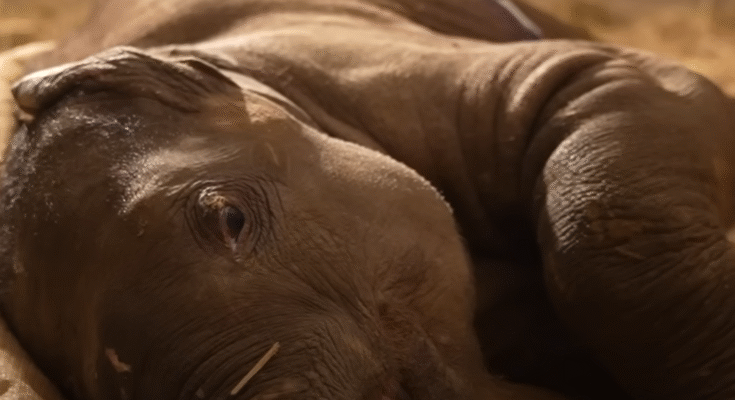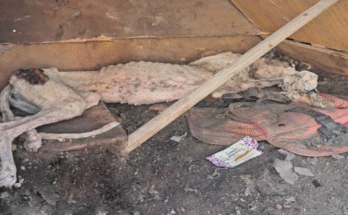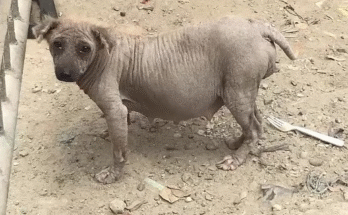It was just past dawn in the heart of rural India, where thick mist clung to the grass and the low rumble of distant trains echoed through the jungle. The forest stirred gently as the sounds of nature began to rise. Birds called to each other. Leaves rustled. But that morning, something unnatural pierced the calm — the loud, metallic shriek of brakes, followed by the haunting silence of something terribly wrong.
Villagers near the railway line came running. What they found would remain etched in their hearts forever.
There, lying motionless near the tracks, was a baby elephant — no older than two years. Her small frame, barely half the size of a full-grown adult, was covered in cuts, bruises, and dirt. Her eyes were wide with fear and confusion, and her trunk twitched weakly as if pleading for help. Her mother and herd had disappeared into the forest, too panicked to return, leaving her behind. She had likely wandered too close to the tracks during the herd’s early morning crossing.
When rescuers from the forest department and local wildlife organizations arrived, they expected the worst. The elephant calf had sustained serious trauma to her legs and side. One of her hind legs was twisted unnaturally, and it was clear that she couldn’t stand. The train, traveling at high speed, had clipped her just enough to cause serious injury but not take her life.
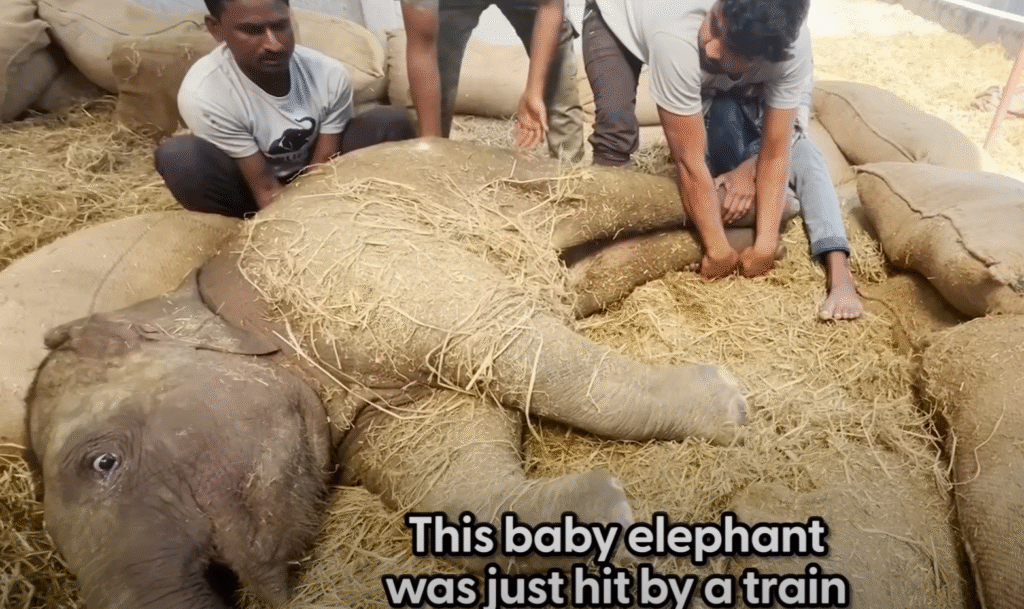
The team gently loaded her onto a transport truck and drove her to a wildlife rescue center several miles away. Throughout the journey, she remained silent — no trumpeting, no signs of resistance — only the occasional blink or slow movement of her trunk. It was as if she knew she was in pain but also sensed she was being helped.
At the sanctuary, the baby elephant was named Kanchi, after a local word meaning “resilient spirit.” The veterinarians began the painstaking process of diagnosing her injuries. Scans revealed multiple fractures and muscle damage in her right hind leg, along with severe bruising to her ribs. But the most alarming sign was that Kanchi didn’t try to get up. For days, she lay on her side in the soft hay of her stall, barely moving.
The caregivers, however, refused to give up. They massaged her muscles daily, treated her wounds, and talked to her softly to build trust. They even brought in another young rescued elephant, Ramu, to stay nearby in hopes that companionship might lift her spirits. Slowly, Kanchi began to respond. She would reach out with her trunk toward her caregivers or give a soft trumpet when Ramu approached. Her eyes, once clouded with fear, began to brighten.

But the road to recovery was far from over. One of the biggest hurdles was getting Kanchi to stand. Weeks passed. The team tried everything — slings, padded supports, and even constructing a custom-made harness that could gently help lift her without hurting her leg. Some days, she would let them try; other days, she would grunt and roll away, clearly in pain.
Then, on a quiet morning nearly two months after the accident, something incredible happened.
Kanchi, without prompting or support, rocked herself forward. The caretakers, who had just entered the stall to start their morning routine, froze in shock. With a series of soft grunts, the little elephant tried to get her front legs under her. Her body trembled. She was shaky, unsure, and clearly afraid. But determination burned in her gaze.
Her front legs straightened.
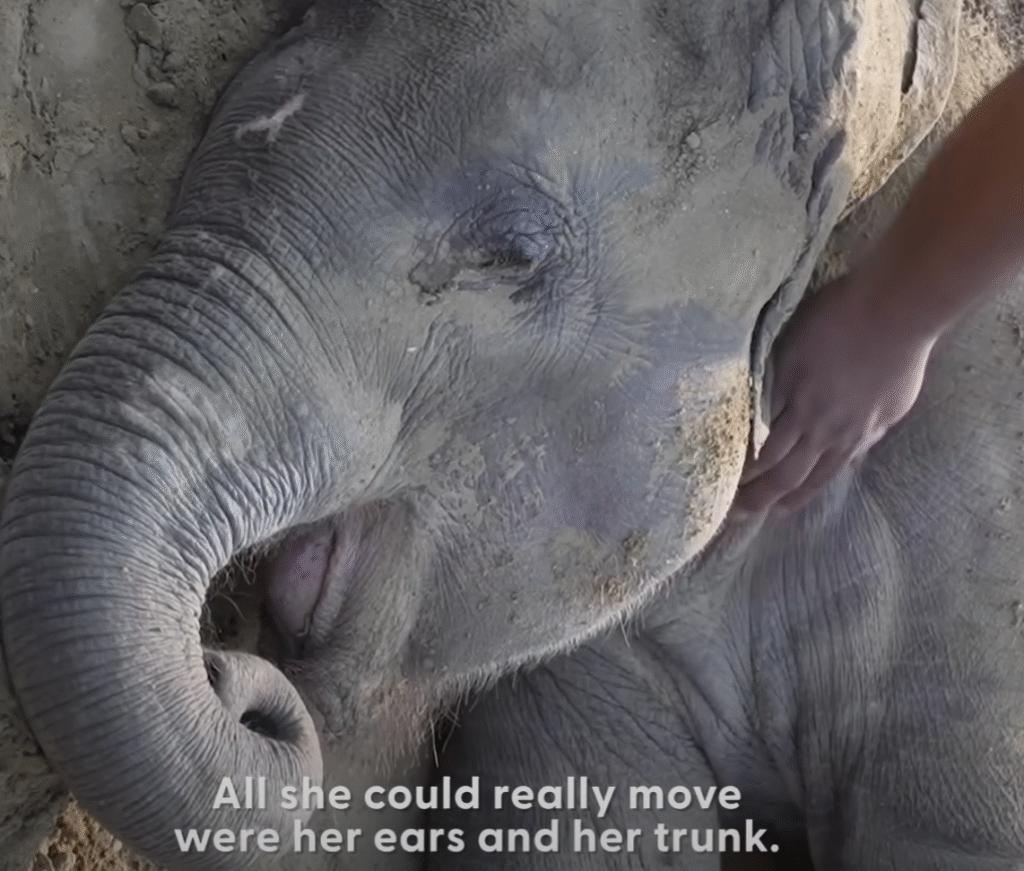
Then came the real test — her injured hind leg. With a loud trumpet that echoed across the sanctuary grounds, Kanchi pushed up. The leg wobbled, then buckled slightly, but she didn’t fall. The team held their breath. For the first time since the accident, she was upright. Standing.
Tears streamed down the faces of the caretakers. They knew what they were witnessing was nothing short of a miracle — a baby who had been left for dead beside a railway track was now defying the odds.
Within minutes, Kanchi took a tentative step forward. Her hind leg dragged slightly, but it moved. One step. Then another. By the fifth step, she collapsed gently into the hay, exhausted but triumphant.
News of Kanchi’s progress spread quickly. Videos of her first steps were shared on social media, capturing the hearts of millions around the world. The footage showed her small, trembling legs moving forward, her ears flapping with effort, and her trunk reaching out for balance. The Dodo, known for sharing emotional stories of animal resilience, featured her journey under the headline: “Baby Elephant Hit By A Train Takes Her First Steps.”
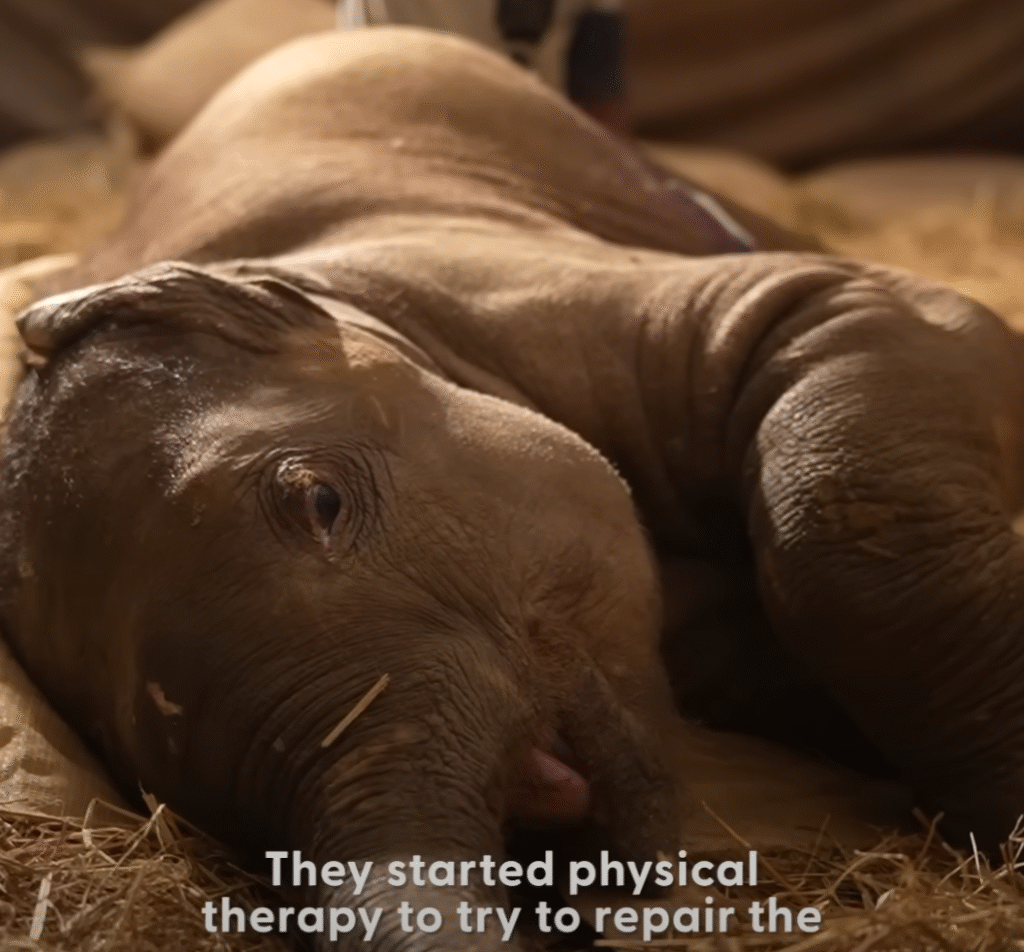
In the following weeks, Kanchi’s strength improved. Physical therapy sessions with her caretakers helped rebuild muscle in her hind leg. She began venturing outside her stall, walking slowly at first, always supervised. Ramu remained her faithful companion, and the two would playfully nudge each other, rolling in mud and splashing in the sanctuary’s pond.
Visitors often asked how a baby so small could survive such a traumatic event. The answer was always the same: her will to live, and the unwavering love of her caretakers.
Kanchi now walks nearly normally. Though she still has a slight limp, it doesn’t stop her from running short distances, playing, or exploring the green fields of the sanctuary. Every day, she grows more confident, her spirit shining through.
She serves as a powerful reminder — not only of the fragility of wildlife in the face of human development, but also of the compassion that can heal even the deepest wounds. The railway authorities, moved by her story, have since pledged to install more elephant crossing signs, slow-down zones, and early warning systems in forested areas to help prevent future tragedies.
As for Kanchi, her journey is far from over. But with each step she takes, she leaves behind a legacy of hope, strength, and second chances.
And thanks to those who didn’t give up on her, the little elephant who once lay broken beside the train tracks now walks tall — a living miracle.
